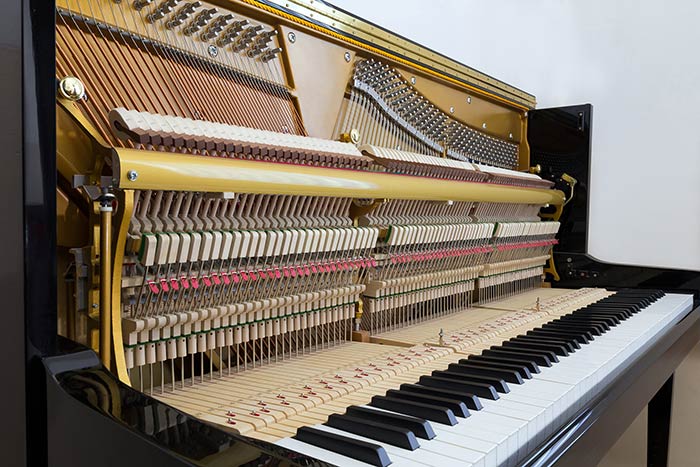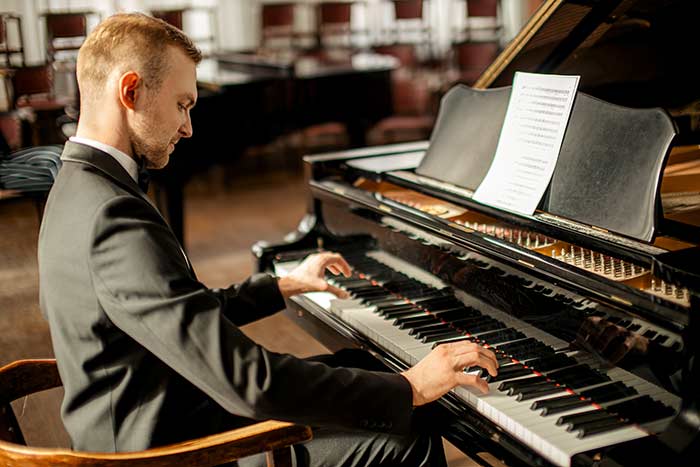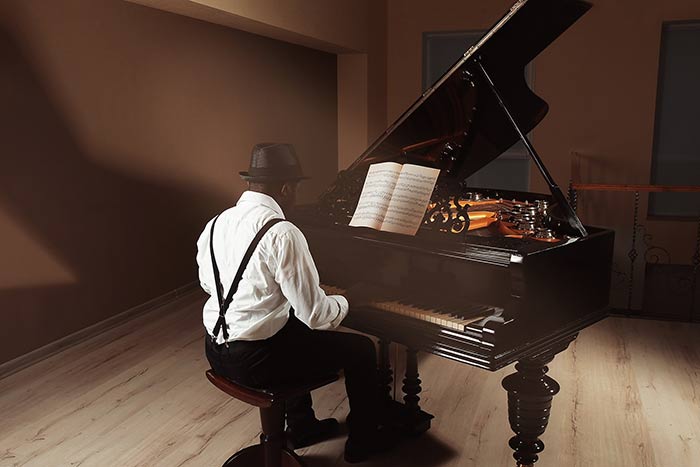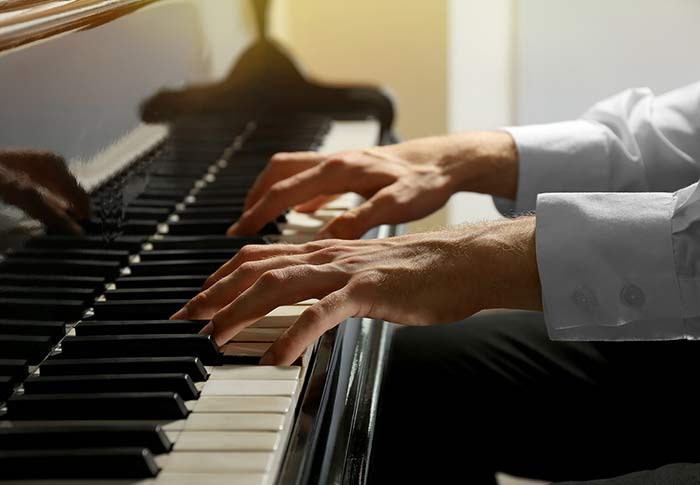With every brushstroke, an artist brings their masterpiece to life — revealing beauty layer by layer.
Similarly, piano makers and designers sculpt their instruments not only to produce sound, but to inspire awe with their visual elegance.
Music is art, a phrase quite often used to describe the beauty thereof.
The Oxford dictionary describes art as the expression or application of human creative skill and imagination, typically in a visual form such as painting or sculpture, producing works to be appreciated for their beauty or emotional power.
Yet somehow the word art does not feel powerful enough to truly captivate the majesty of the piano — both audibly and visually.
In this article, the progression of the piano and its design will be discussed.
When Music Meets Design
Around the year 1700, Bartolomeo Cristofori (a genius Italian maker of instruments), the revolutionary piano was born.
Pianos have come a long way in terms of design, structure, aesthetics and more.
The following reveals a timeline of the most notable innovators and inventors and the impact they made on piano regarding its functionality and design.
1700s: The First Piano
The lack of controlling the dynamics spurred on Cristofori to invent a harpsichord, replacing the usual plucking mechanism with a hammer which created the first piano.
Thus it resembled a harpsichord.
It has a plain, wing-shaped exterior with a single keyboard and no special stops which can alter the tone.
On the outside, it pretty much looked exactly like a harpsichord, but had a totally different interior.
Cristofori called it a “gravicembalo col piano e forte” which translates to “harpsichord with soft and loud” — allowing pianists to now have dynamic control.
Late 1700s – Early 1800s: Classical Refinement and Development
The case and structure design of the piano slowly but surely becomes more elegant, with veneered woods and modest ornamentation.
A sudden shift in the demand for harpsichords has changed drastically, as all the more upright pianos begin appearing in people’s homes.
A fine craftsman named John Broadwood married Barbara, the daughter of Burkat Shudi — who owned a business in making harpsichords.
Later on, Shudi handed over the running of his business to both his son and John Broadwood.
After Shudi’s passing, the business became his son’s and his son-in-law’s.
By popular demand, due to the shift the invention of the piano caused, Broadwood found himself making more pianos than harpsichords!
He continued to develop the piano, improving the bass tone.
Today the business is known as Broadwood & Sons, and claims to be the oldest established manufacturer in the world.
Sébastian Érard, a brilliant piano and harp maker, specialised in the production of these instruments, enabling him to develop the capacities of both.
He contributed to grand piano engineering and revolutionized the construction of the grand style of piano.
Érard pioneered a grand piano mechanism that laid the groundwork for the modern grand action we know today.
His invention of the “double escapement” system, which introduced a repetition lever, made it possible to strike the same note rapidly without fully releasing the key — a major leap beyond earlier single-action designs.
And that was just one of his many forward-thinking contributions to piano technology.
Mid 1800s: Romantic Era
During the Romantic Period in Europe, pianos became a symbol of wealth and sophistication. Art case pianos featured intricate woodwork, gilded carvings, and floral inlays.
Steinway & Sons, now one of the world’s leading piano makers, unveiled the first square piano featuring a groundbreaking scale design that dramatically improved sound quality — setting a new standard that future manufacturers would follow.
Pianos evolved from square pianos with horizontal strings to more compact upright models with vertical strings.
Yet the increasing demand for compact upright models soon replaced all square pianos, thanks to the rapidly growing industrialized city planning that led to smaller urban spaces.
1900s: Minimalism and Mass Production
As pianos became more accessible to the growing middle class during the 19th century, their popularity soared.
Instruments of this era were often highly ornate, crafted from luxurious, dark exotic woods such as Honduran Mahogany and Brazilian Rosewood, perfectly mirroring the Victorian era’s preference for rich, elaborate designs.
However, by the late 19th and early 20th centuries, there was a gradual shift in aesthetic tastes, with the demand for lighter finishes like oak and walnut beginning to increase.
Technological advancements brought significant changes to piano manufacturing.
The Industrial Revolution allowed the transition from individually handcrafted instruments to more efficient factory production.
This shift led to greater standardisation, making pianos more affordable and giving rise to simpler, more streamlined designs.
By the late 20th century, the emergence of digital pianos further transformed the landscape, offering a modern alternative that blended technological innovation with musical tradition.
2000s – Present: The Piano as a Masterpiece
Recently, piano design has entered an exciting new era, with designers teaming up with artists and architects to create modern, eye-catching instruments that are as much works of art as they are musical tools.
While classic wood finishes like mahogany, ebony, and walnut remain popular, there has been a noticeable shift toward bold and contemporary colour options — including white, grey, red, and even metallic finishes.
Some brands have pushed boundaries even further, producing stunning transparent acrylic or crystal pianos that turn heads in both private homes and concert halls.
This creative wave took off in the early 2000s, as cultural trends began to embrace individuality and artistic expression more openly.
That spirit of innovation extended to the piano world, where manufacturers began offering more luxurious, unconventional, and intricately designed instruments — reflecting both technological advancements and changing aesthetic tastes.
Conclusion
The piano has undergone significant changes in both exterior and interior design. It truly is a piece of art — a blank canvas, waiting eagerly for someone to bring it to life.
RESOURCES:
1.1: What Is Art? – Humanities LibreTexts
A brief history of john broadwood & sons pianos (no date) History of John Broadwood & Sons Pianos. Available at: https://broadwood.co.uk/history.html (Accessed: 16 April 2025).
The evolution of the modern piano (facts, photos and Timeline): Blog: Lindeblad Piano (no date) Lindebladpiano. Available at: https://www.lindebladpiano.com/blog/history-of-the-piano (Accessed: 15 April 2025).














